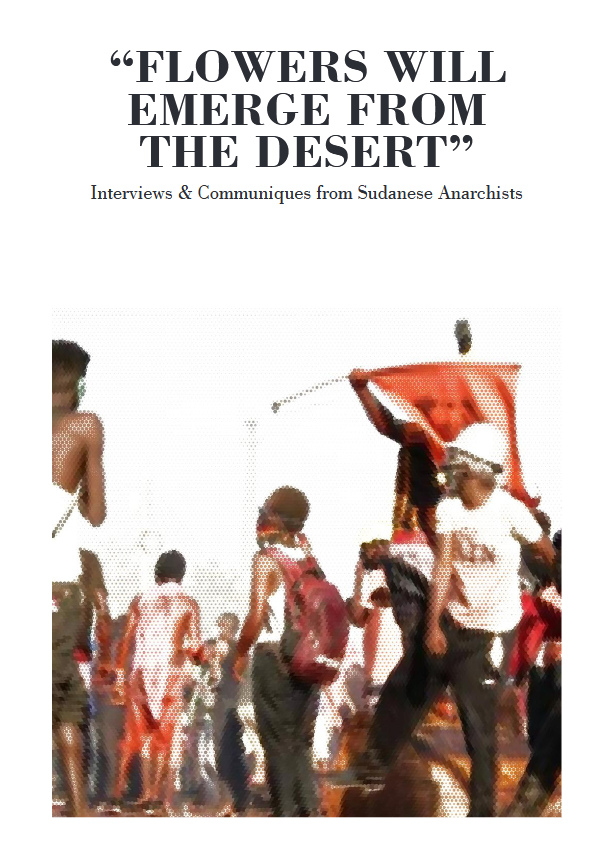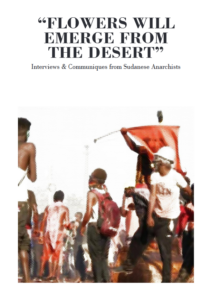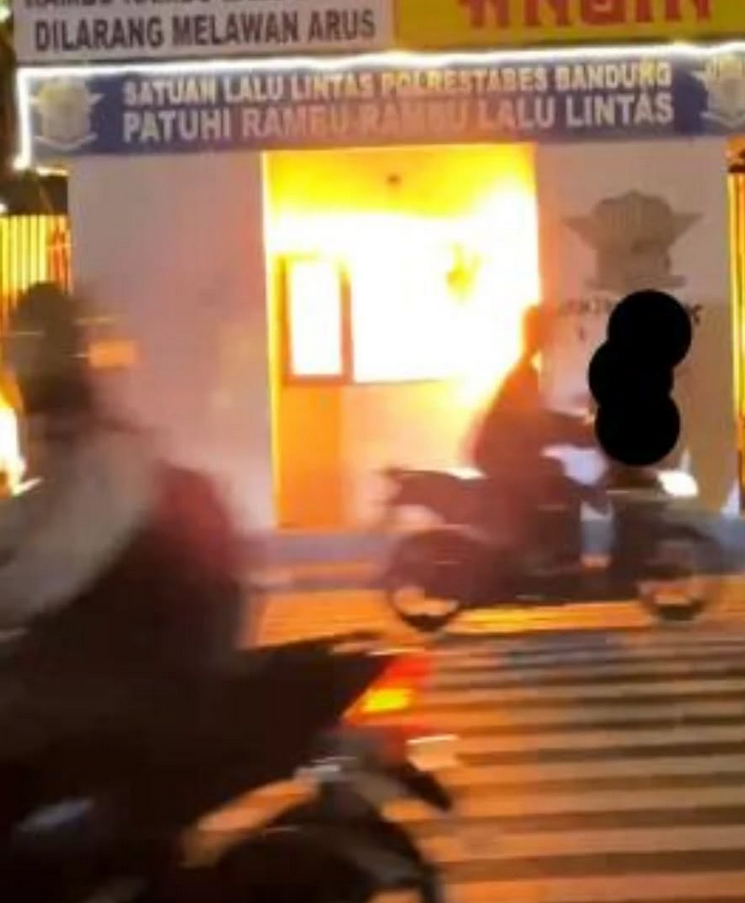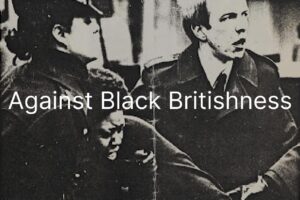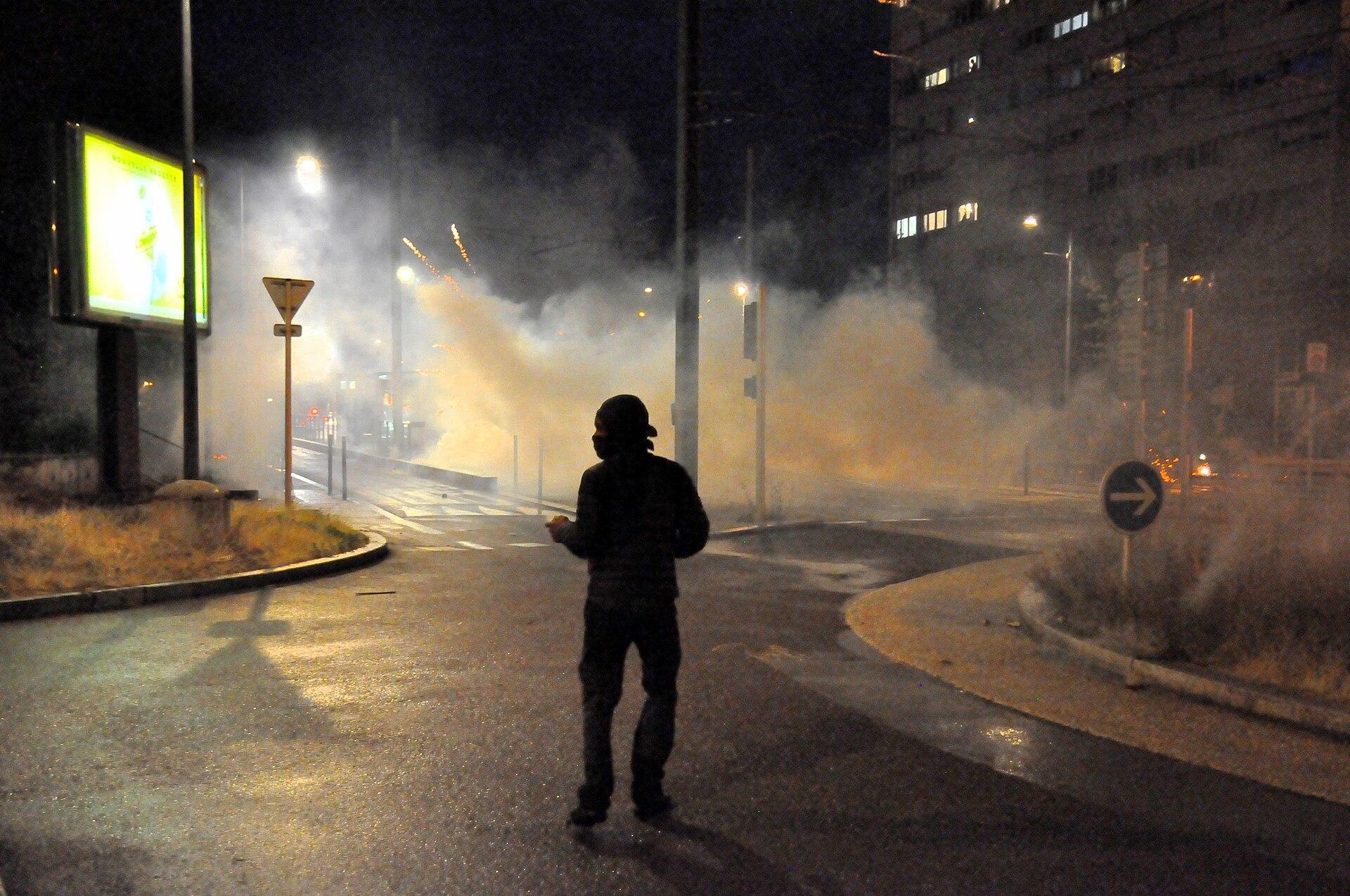
Source: http://oclibertaire.lautre.net/spip.php?article4261 & https://www.ainfos.ca/en/ainfos52441.html
Introduction
France is no stranger to uprisings of racialized youth following murders of their brethren at the hands of the police.
October 27th, 2005, three Black and Arab youths flee from a police patrol, knowing that they will be subject to an identity check and possible detention for hours at a police station. The police terrify them and force them into an electrical substation. Zyed Benna and Bouna Traoré are killed while the third child Muhittin Altun survives but is severely injured.
February 4th, 2017, french cops rape and humiliate Théodore Luhaka, a Black man. In March of that same year Liu Shaoyao, a Chinese Man, was murdered by French police who claimed he came at them with a pair of scissors.
June 27th, 2023, Nahel Merzouk, a North African teenager, is murdered by police, the murder is filmed from several angles and shared widely online.
December 10th, 2024, Abdoulaye, a Black man who suffered with mental health conditions was murdered in police custody, in 2023 he was the center of a viral video in which he was struck by an unmarked police car before being leapt on by cops in body armour.
The response to these atrocities is always the same;
-fascists raise money for the cops, raising millions of euros
-the police are given new powers of search, detention and exclusion,
-liberals, civil society organisations, Black/Asian/Arab/Muslim “rights” orgs (assimilationists) stand in a square and talk into megaphones about “justice” and “accountability”
-leftists propose something between police “reform” and forced employment
-right wingers propose immigration restrictions
-shop owners buy new security equipment (cameras, shutters)
-lumpen, anarchists and militant members of the mourning communities take to the streets, fight the police, burn cars, loot shops, start fires.
-the family of the deceased appear on national television, demanding peace with tears in their eyes.
Mutt.
The Revolts Following The Death Of Nahel
At the OCL (Organisation Communiste Libertaire) meetings this summer, a discussion was organized, based on the presentation of the brochure “Souffleur sur les braises” on the revolts following the death of Nahel, in Nanterre last summer. —- This brochure gives the floor to 5 people who live in Hérouville, a suburb of Caen, and participated in the fiery nights of their neighborhood. Some people were known for a long time, or crossed paths in the Yellow Vests (GJ) or more recent struggles, others were unknown before this meeting. The desire was to show solidarity and undo the distance between the revolutionary movements and these revolts.
Nahel, a 17-year-old, was killed by a police officer in Nanterre on June 27, 2023, the day after riots broke out in Nanterre, then the day after that everywhere in France. The comparison with 2005 does not seem relevant to the authors of the brochure, because at the time the revolt was confined to the suburbs of large cities and especially in the Paris region. In 2023, riots broke out in small towns of 4/5000 inhabitants, where police stations were attacked with Molotov cocktails, tobacco shops looted, cars burned. A generalized revolt that lasted 5/6 nights, with attacks by cops using mortars, damage to public buildings or banks, looting of stores, often with redistribution to the population, as happened in Caen in 3 working-class neighborhoods.
The Ministry of the Interior counts 23,878 fires, 12,000 vehicles set on fire, 2,500 public buildings damaged including 273 police and gendarmerie premises, 105 town halls, 168 schools. The Medef speaks of a billion euros of deficit for companies following the damage. By comparison, during the movement against the pension reform which lasted several weeks, there were 299 attacks against public institutions. This shows the degree of intensity of these few nights of revolts and everywhere in France.
Why did it explode this time?
Indeed, this is not the first time that a young person has been shot by the police and the reactions are rarely of such magnitude. There are at least 3 elements that can explain these riots. First, a saturation effect due to the increase in the number of people injured or killed by gunfire since the 2017 laws that give cops more possibilities to shoot, then the very shocking video of Nahel’s death that circulated very quickly on social networks and finally references to the film Athena (1), “we do like Athena!” shouted the rioters.
The organization was done in small groups with young people aged 13/14, the older ones came to support them. They also dropped them off by car in other places in the city, so that it would be faster. The interviewees are 20/25 and are clearly among the oldest. As an anecdote, two 50-year-old friends who wanted to participate were accosted and searched by the young people, who did not know them and suspected them of being cops. A whole neighborhood solidarity was set up, with the older brothers, the families who reported where the cops were and left the doors of the buildings open so that the young people could take shelter. Links between the neighborhoods that are usually opposed, made it possible to start all at the same time and thus disperse the cops, but also to exchange information on the cops and for the mortars. The mortars were brought back from Poland and Germany by go-fasts like the dealer, and then distributed in the different neighborhoods.
From the start, a call was made: “we don’t touch people’s vehicles, but public things”. The targets were surveillance cameras, streetlights to avoid being spotted, schools, town halls, bus and tram companies, shopping centers on the edge of neighborhoods, tobacconists (436 in France), sports shops, banks. In Hérouville, there weren’t enough cops, about thirty, and they could only hold the central square, where there are shops, a theater, and also a market square. At one point, the cops left, telling the young people, “you’re burning down your neighborhood anyway, we don’t care”. As soon as they left, the young people attacked the bank and managed to get in. The cops came back immediately and charged, there was no question of letting them touch the banks.
In Hérouville, as everywhere, the repression caused a lot of injuries from flashballs and stun grenades, there were at least 3 arrests. It was the first time that the GIGN was present, as well as many drones. In France, there were 1,300 arrests, followed by 762 convictions to a firm sentence, on average 8 months of incarceration. The GIGN and sometimes the RAID intervened everywhere in France and drones were widely used. Curfews were introduced, in Caen buses and trams stopped their service from 7 p.m. and gas stations also closed at 7 p.m.
The Yellow Vests of Caen were for many people from working class neighborhoods. From this movement, there remain in Hérouville informal collectives, for example a garden at the foot of the towers where there are aperitifs, food recovery and solidarity. Since the riots, 4 cameras planted at the top of the towers, monitor the garden permanently.
There were attempts by activists to make connections in a more or less clumsy way. A demonstration was called in the city center, many people from the neighborhoods came. The people who called for the demonstration took the lead of the procession with somewhat angry slogans: “we’re going to smash everything, we’re going to do our shopping”. By saying we’re going to do our shopping, they announce we’re going to loot and in fact they don’t do it. The people from the neighborhoods who have been looting for several nights are disgusted and announce that they won’t come back. At the next demonstration, there will only be 50 people. They weren’t given the lead of the procession, nor the megaphones, and in addition 4 people were arrested, they were a bit bitter. They feel more vulnerable in the city center and don’t know where to hide unlike in the neighborhood. The left-wing organizations organized a solidarity demonstration in September in Caen. She leaves from the only working-class neighborhood where nothing happened at the end of June, pure coincidence?
If it only lasted a few nights and if some places were not attacked, it is probably so as not to disturb business. This is a reality of the neighborhoods that the struggles are confronted with. It is also due to the lack of mortars that were used to keep the cops at a distance, and also of course because of the repression. People died during these riots, including one in Marseille from a flashball shot at point-blank range.
We have every interest in getting closer to the people who revolted because they are cool, even if there are lots of contradictions.
In other cities
In Reims , a city of 220,000 inhabitants, in a district of 30,000 inhabitants, average income 890 euros, 37% of unemployed under 25s, 27% of single-parent families, priority district of the city, there is a small tradition of riots, notably during the acquittal of a baker from the FN who had killed a young man who had stolen croissants from her. These are the images we see at the beginning of the film “La haine”. Last year, there were 2 days of riots, with very young participants and adults who followed them, without being masked, and sometimes regulated, preventing them from attacking certain places, such as the Post Office where they receive their RSA. A store was targeted, but not the one run by the Chechens, nor the Kabyles’ tobacco shop where the old men play PMU. The police station, which is empty at night, was attacked, but not the national police academy or the CRS barracks near the neighborhood. Contacts were made via Snapchat or Instagram loops, already created at the high school or elsewhere. The looting is anecdotal: coke, Yop, sweets, and the next morning the mothers came to stock up on the groceries necessary for survival, then later it was the alcohol that was stolen. The HLM office was attacked, we don’t know by whom, but certainly not by the kids. The police remained very discreet, no major clashes as long as it remained in the neighborhood. On the other hand, roadblocks were set up in the city center to prevent people from going there.
In the 93 , the riots were less significant than in 2005. Some things are surprising. In Bobigny, for example, the looting was more of their mother’s shopping. Rosny 2, the largest shopping center in the 93, was apparently looted by young people from residential areas. The darons who protect certain buildings already existed in 2005, but it was more organized in 2023. In Blanc-Mesnil, mothers had meals in front of the municipal swimming pool to protect it. Everything was burning around it, but the general high school, which has a glass facade and would have been an easy target, was not hit, the vocational high school was. The silent march for Nahel’s death in the city center of Nanterre attracted an impressive crowd, very calm and family-oriented. It degenerated as they approached the prefecture, surely by provocation from the many police officers, to prevent Nahel’s family from speaking out.
Mantes la Jolie , 40,000 inhabitants, is known because it is where the 151 high school students were forced to stay on their knees, hands on their heads, while they blocked their high school to oppose the reform of the baccalaureate and Parcoursup, but also in support of the Yellow Vests. There was little solidarity for these high school students, despite the collective for the defense of young people from Mantois that was created on this occasion, 150 people at the demonstrations, mainly the left and the far left. The situation was identical in June, just a demonstration of 30 people called by Solidaires where there were twice as many cops. An attempt to create union solidarity, by explaining that the rioters do not come out anywhere, that they are from our class, the children of our friends, of our colleagues, remained very much in the minority. On the possibility of getting involved, same thing as in Caen when you are over 30, it leaves a feeling of unease. There are very few political forces left in the neighborhoods. The MIB (2) or the collective against double punishment, which could, in their time, provide a link between political forces and the inhabitants of working-class neighborhoods, no longer exist.
In Toulouse , we quickly realized that the neighborhoods were already structured into teams, and that there was no place to join them, unlike the GJ where you could join a roundabout. So, we wanted to do public and reachable things, with the idea of extending the fight, taking it out of the ghetto, multiplying the offensives, this resulted in a demonstration of 400 activists completely supervised by the cops. We would have done better to do things on our own, block things. We must stop asking ourselves the question of the outside or even of solidarity, but rather that of how we get into the fight and not how we support. It is certainly easier to do anti-repression than to get involved.
There were agreements with the dealers not to start the riots too early, so that they could sell. We also saw people patrolling the neighborhoods to watch their cars.
In the 92 in Chatenay Malabry , the Butte Rouge is a very important 100% HLM city, with projects for rehabilitation, destruction, privatization. There were no riots in 2005, but there, the annex town hall burned and the tramway – an important element of gentrification to bring more affluent people to the city – was damaged. In the 1970s, there were lots of associations, the Fasti, the Gisti (3) …, a MJC managed by the inhabitants and the Communist Party. Now there is nothing left, the opposition is 20 people in a city of 35,000 inhabitants. There is no political life, but clientelism with gentrification and the urban planning where everyone is gorging themselves. When we created a collective to resist the reconstructions in the Butte Rouge neighborhood, we couldn’t get a room, or at the last minute. The posters were taken down the same day. People are afraid that they won’t be given housing or that they’ll be evicted, so they don’t resist much. And the mayors are going to have even more power to allocate social housing. The associations are hyper legalistic. To buy social peace, all the communities have their own room and subsidies. These 40 years of depoliticizing the neighborhoods explain why things are going to explode. In 2005, we won, what, a police station in the center of the neighborhood.
On the issue of the presence of girls and women in the riots
In the Yellow Vests, women were very present and it lasted for more than a year with a lot of discussions. What about these riots? For some, it is a spontaneous revolt of anger by people who are used to occupying the streets, who find it legitimate to do so. For others, girls are less present than guys in the riots, but it is no different from what happens elsewhere. Guys have a strong feeling of anger, because they are the ones who are always arrested and hassled by the police.
There were young and older women in the demonstrations. In Hérouville, women and children walked around the neighborhood to watch the cops and protect from afar.
In Rennes, girls were discussing how to make Molotov cocktails with tampons. They were taking part in looting stores. The rioters were quite young, and there is repression within the family. Who lets their daughters out at night? And that is not the same as saying that the street was forbidden to girls.
The repression
We see that the Senate was expecting a revolt, thanks to the surveillance of social networks, but not who, where and how. We find a lot of interesting information on the Senate Information Mission. It notes at least one incident in 330 cities, including cities that have never seen this kind of riots like Vierzon. In Montargis people went to destroy the city center. Those who are convicted are first-time offenders with an average age of 14, the youngest is 12 years old for a firm sentence.
In Reims, there were convictions in immediate appearance and probably bans from the territory for some of the accused who were not seen again in the neighborhood. There was no solidarity from the left or the far left, no follow-up of the trials. The residents of the neighborhood were punished collectively, no public transport for 6 weeks, the renovation of the bus shelters took more than 4 months. The mayor of Reims proposed to punish the parents of the rioters by depriving them of social housing and family allowances.
All the inhabitants of the 93 have suffered collective punishment: no more buses throughout the department from 9 p.m. and then 7 p.m. The festivities normally present during the summer have been cancelled, notably on July 14.
What could have been the tipping points for this movement to gain momentum and be joined by other struggles?
These riots were a little better perceived than those of 2005, because there was a general anger after the demonstrations on pensions and Sainte Soline, which can help to better understand this movement.
For there to be a connection, forces are needed, but the revolutionary movement no longer exists. The first phase would be to create a link, but relatively few activists live in these working-class neighborhoods.
With the yellow vests, there was no need for revolutionary organizations to create these links, it happened quite naturally on the roundabouts.
There was a social explosion with a speech and demands among the GJ. A fairly political movement and bearer of projects, which temporarily put the cogs of the state in difficulty and managed to get 7 billion while the state coffers were supposedly empty. Most of the parties and union organizations refused to analyze the GJ as a political revolt.
Participating in a riot is part of the culture of young people in the neighborhood. They defend their territories, it is anger expressed in actions. Young people say “there are no slogans, we just act”, but it is not just anger, the message is clear, a guy is getting killed, we have to react so that the next one is not me. And we are tired of being victims of this increasingly racist police.
Working-class neighborhoods are more often stigmatized, especially during Covid, and more recently for the defense of terrorism because of support for Palestine and at the time of the Olympic Games, there was a lot of repression, searches and house arrests.
But the inhabitants of working-class neighborhoods also participate in the struggles, notably in the mobilizations for Palestine; there are many people from the neighborhoods and few political organizations.
If the left had made immigrants vote as it had promised in 81, politicians would care more about the inhabitants of the suburbs. During the strike at Talbot in June and July 1982, in addition to wage demands and improved working conditions, skilled workers of immigrant origin fought for their union freedoms. The Mauroy government (socialist) denounced them as being manipulated by Islamists, to discredit their struggles and demands.
Since then, the Islamists have taken up a lot of space, and the dealers regulate the economy and regulate the neighborhoods, it is one of the cogs of the system.
The targets were also clear in the 93 all the companies in the free zone burned down. Many public institutions and banks were attacked. And if the school burns down it is perhaps because it is raining in the classrooms. The school is also one of the places of social discrimination and reproduction of the dominant ideology. And it also serves as a daycare, to get parents back to work, as we saw during Covid.
And after?
These events have had a strong impact on people and minds. There were discussions between young people and other residents in many neighborhoods after the riots.
It is a continuation of other movements. All actions, whether ecological, riots, GJ, anti-pension, feed off each other. A wealth is created, and something remains, it is added to what happened before. For example, the demonstrations after the yellow vests were modeled, took the same form as that of the GJ.
For the moment these different movements do not really look at each other, they remain very separate. It is our job to create links. We could have helped them on the question of repression, it was an opportunity to bring a clear political point of view by showing solidarity and saying that we are right to revolt, that the riot is legitimate.
The Yellow Vests are not joining the demonstrations of support, probably because of the trauma caused by the enormous police repression still underway. There are still trials and the families are affected by the injured. They are not putting themselves forward, even if some are still in the movements. It is a missed opportunity, people did not come out, they left the kids all alone.
The media sets the pace and delivers a discourse. We see this in the difference in treatment with the farmers’ riots that went as far as Paris.
There is another component missing, something stronger than the riot. The form was liked, being where the cops are not, but it is difficult to continue when the government sends tanks against the rioters.
We are not just in solidarity, but we fight to change the world for us too, where we are. It was complicated to mobilize even in the union organizations.
There were calls to go to court where the young people were appearing immediately, but they were well guarded. In addition, the majority were summoned to the juvenile court, therefore without an audience. In Bobigny, you had to know in which room the trial was taking place in order to be able to enter, and since the clerks were also on strike, there was no indication of the room. However, there were many more people at the trials than in 2005.
Some anti-repression groups spend more time dealing with the left and have missed the riots. Nevertheless, an anti-repression and anti-racist fund has been created.
On the relationship to the image , we keep saying that we should not film during demonstrations or other things, while we see that the movement began thanks to the video of Nahel’s death and that perhaps without this shocking video, nothing would have happened. Can’t the videos serve as an archive of what happened, scenes of looting, cop attacks, the jubilation…? So as not to forget.
Odile
Notes
1- The film Athena – Athena is a French film released on Netflix in 2022 and directed by Romain Gavras. Grandson of an Algerian rifleman, Abdel is a young lieutenant in the French army, engaged in Mali. He returns following the death of his youngest brother Idir, apparently deceased as a result of a police blunder. Abdel finds his family torn apart, between the desire for revenge of his little brother Karim and the business in peril of his big brother dealer Moktar, he tries to calm the tensions. Minute by minute, the Athena city plunges into chaos, then the situation degenerates into civil war throughout France… The end of the film reveals that a small far-right group staged the fake police blunder that cost Idir his life.
2- Immigration and Suburbs Movement
3- FASTI Federation of ASTI- Associations of Solidarity with All Immigrants. GISTI Information and Support Group for Immigrants
Further Reading
https://infokiosques.net/spip.php?page=lire&id_article=2061
https://illwill.com/nothing-left-to-loot

